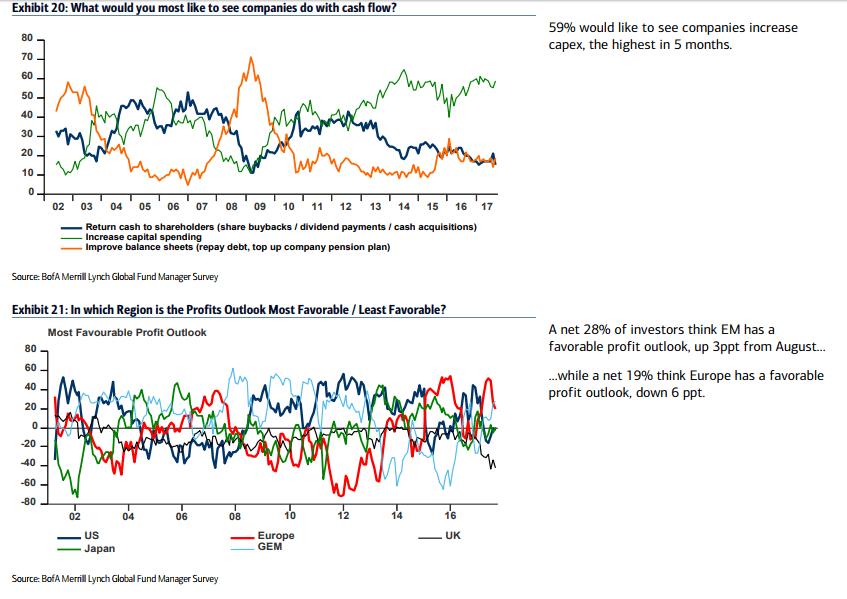
Jamie Dimon Joins Resistance Of Bitcoin Skeptics
Jamie Dimon isn't the . On the day the outspoken JPMorgan chief told the world bitcoin was a ',' a Bank of America Merrill Lynch Global Fund Manager Survey shows that were also giving the cryptocurrency with a side eye calling it the most crowded trade. The survey pointed to numerous topics of the day, such as what fund managers view as a market mis-perception around volatility and the British pound. The most significant tail risk, which has been a roller coaster of topics throughout the year, is now focused on a common concern out of Asia.
Get The REITs eBook in PDF Get our PDF study on REITs and our other investor studies! Save it to your desktop, read it on your tablet, or email to your colleagues.
We respect your
Bitcoin is the most crowded trade of the day, say institutional investors
Are the tech darlings the most crowded trade right now? When BofA's global investment strategy team asked 214 asset managers with $629 billion under management, it wasn't a stock trade that got the most attention.
Bitcoin, up a strong 344% year to date, was judged by 26% of the institutional investors to be the most trade. The tech stocks were not far behind, with the NASDAQ being the most crowded trade according to 22% of survey participants. Short US dollar, judged by 21% to be the most crowded trade, stands juxtaposed to the first quarter 2017, when long US dollar was considered the most crowded trade throughout the time period. Others liked disagree on fundamental level, while others mocked Dimon over his comments
With threatening and the US administration with little plausible options available to them, the most significant tail risk institutional investors now consider is that the unmanageable war occurs.
The study, conducted by BofA Chief Investment Strategist Michael Hartnett and Investment Strategist Jared Woodard, has benchmarked a wide variety of institutional investing concerns, most of which have failed to materialize during the time they were considered the top tail risk. 2017 started with concerns over trade wars and protectionism and the designation of the European Union. Throughout much of the summer, central bank policy, in the form of Chinese credit tightening as well as Fed / ECB policy mistakes, have led to concerns, principally of a bond market crash.
While Brexit was a fear in May and June of 2016, currently the British pound is considered the second most undervalued asset. It is the talk of the town, however, that appears as the most underappreciated. The GBP/USD currency spread is currently trading near 1.32 after touching bottom on January 16, 2017 near 1.20.
Volatility is by far considered the most undervalued market asset by the institutional investors surveyed. On July 24 the VIX index was trading near 9.43, near historic lows, and it is currently trading at 10.63. This record low volatility is occurring as global uncertainty is at all-time highs, according to analysts.
Investors are bullish on "Goldilocks," but hedges increase
While investors feel the market is overvalued, cash levels, which are currently at near decade-long highs, need to drop before BofA considers valuations to be a major concern.
Investors surveyed are largely positioned pro-cyclical stocks, such as the , emerging markets and banks, while exposure to the US, energy and UK are among the least favored positions.
Overall the investors surveyed were a bullish lot. Those investors buying into the ' scenario of above trend growth with below trend inflation have been sharply rising in 2017, eclipsing even the optimism of 2009.
If investors are going to be surprised it will come from a recession, while an equity bubble or an equity bear market occurring will the least surprising, according to the survey. Historically recessions have been correlated with bear markets.
Given the concerns, investors appear to be hedging, with the largest increase in such activity in 14 months occuring recently.

Legal Disclaimer:
MENAFN provides the
information “as is” without warranty of any kind. We do not accept
any responsibility or liability for the accuracy, content, images,
videos, licenses, completeness, legality, or reliability of the information
contained in this article. If you have any complaints or copyright
issues related to this article, kindly contact the provider above.
Most popular stories
Market Research

- Financewire And Tipranks Partner To Redefine Financial News Distribution
- Ethereum-Based Defi Crypto Mutuum Finance (MUTM) Reaches 50% Completion In Phase 6
- Stonehaven Circle Marks 13Th Anniversary With Hadrian Colwyn Leading Calvio Ailegacyx Innovation
- Citadel Launches Suiball, The First Sui-Native Hardware Wallet
- Motif AI Enters Phase Two Of Its Growth Cycle
- Dubai At The Centre Of Global Finance: Forex Expo 2025 Redefines The Trading Landscape




















Comments
No comment